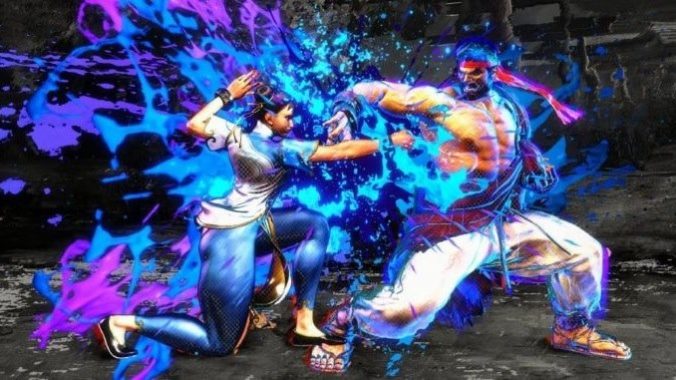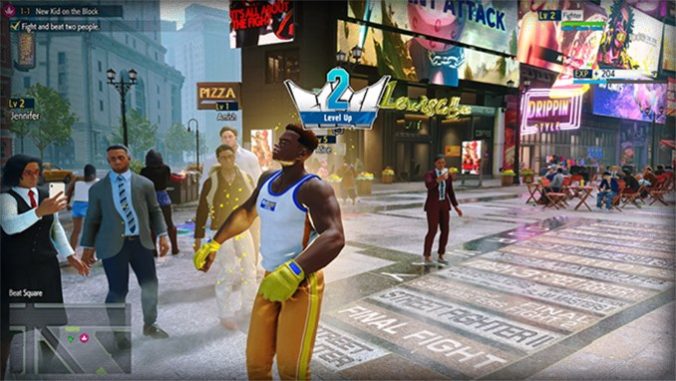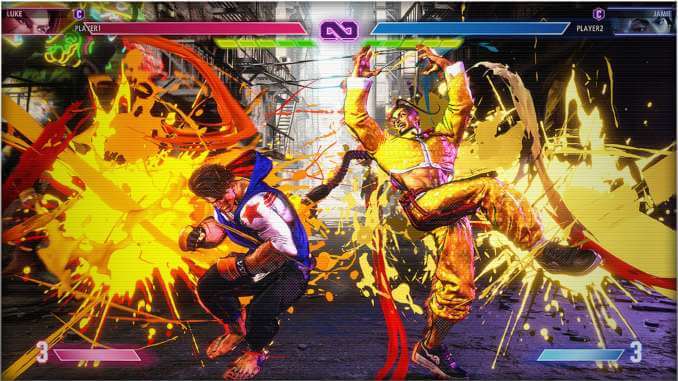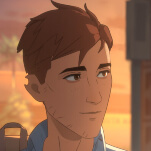Street Fighter 6 Will Knock Out Veterans and Newbies Alike

Street Fighter 6 is my favorite RPG of the year so far. I don’t even know what to make of that. The game built around roughhousing with your buddies and losing your quarters to the sharks down at the arcade has dived into Yakuza territory with a lengthy role-playing game set in the mean streets of Metro City (among other locales). In the past playing Street Fighter alone meant endless tourneys with the computer or, more recently, getting destroyed online by some random middle schooler with the tag Akuma69420. In Street Fighter 6’s World Tour mode you’ll spend a lot of time fighting with the computer, but with an actual storyline and sense of progression to keep you motivated.
Earlier this month I wrote about how much I loved the taste of World Tour we got in the game’s demo. As eye-opening as that demo was, it didn’t give much of a sense of how massive World Tour would be. Expect to put at least two dozen hours into it, between following the story and grinding to boost your levels. With multiple locations to travel to, a roster full of fighters to learn from, and a surprisingly political story focused on capitalist colonialism and the sometimes predatory nature of the charity industry, World Tour is a sprawling brawlfest that has something to say and that says it with empathy. And fists, of course.
In World Tour you can fight just about anybody. Street thugs and gang members will consistently bum rush you if you get nearby (unless you’re way too powerful for them), and this will trigger a fight against multiple opponents at once who are usually quite weak. But almost anybody you pass on the street is also available to fight if you challenge them; these one-on-one fights will often be tougher than the street scrums, but with greater reward in turn. And with multiple tracks to level up—beyond your overall level, you’ll also want to level up all the different fighting styles you’ll learn from famous fighters like Ryu, Chun-Li, and Juri along the way—you’ll want to fight a lot, even if it’s just taking down the same squad of dayglo TV-headed street punks outside of Haggar Stadium for the umpteenth time.
In addition to experience, which will gradually expand your stats while helping you learn and unlock new attacks from your teachers, you’ll also acquire clothing, food, accessories, and other items that can give you permanent or temporary power ups. Clothing isn’t just a stylistic choice but acts like armor in old RPGs; it’ll boost your defense and your punching, kicking, and throwing damage, and can be enhanced by combining it with other clothing items you don’t plan on using. This is actually one of my minor complaints about World Tour; I often hated the way my character looked because it was the strongest outfit for him to wear. Like, were I a real life Street Fighter, I would never square up in a top hat, poncho, and sweatpants. In RPGs you have to go where the numbers take you, though, and so there I was, running around like Abe Lincoln on vacation in Baja.

Beyond the novelty of a lengthy role-playing game built around Street Fighter fights and characters, World Tour also lets us customize fighters in a way fighting games rarely do. As you “enroll” with each member of the game’s roster, you’ll start to unlock their movies. You’ll pick one style to focus on at any one time, although you can change that at any moment through the in-game smart phone app. That style determines your basic moves, taunts, and body language; so if you want to pose like Guile, Dee Jay, or the new streetsmart ninja Kimberly, you’ll want to pick their style. On top of that you can select special attacks and super arts (or, as my very non-professional friends call ‘em, “finishers”) from any of the teachers you’ve studied under so far. That lets you customize your own unique fighting style. You can have all the basic moves of Ken, but supplement that with Marisa’s Superman punch, Dee Jay’s spinning kicks, Chun-Li’s spinning bird kick, E. Honda’s forearm thrusts, and Blanka’s forward flying roll. Your light, medium, and strong super arts can all come from three different fighters. Your fighting style is almost as customizable as your appearance, and playing around with the different attacks to find the best possible moveset (or at least the most fun moveset) might be the most satisfying part of World Tour.
World Tour alone would make Street Fighter 6 one of my favorite games of the year so far. There’s so much more here, though. It’s like a whole new game built on top of what we previously knew Street Fighter to be.
Fighting Ground is the mode I’ve spent the second most amount of time in. This is the traditional Street Fighter arcade mode, with short storylines for every fighter’s single-player tracks, and options to play against others locally or online. It’s also where you’ll find the tutorial and other training tools. The story mode is basically classic Street Fighter; you pick your fighter, pick the difficulty level and number of fights, and then brief cut-scenes explain what Zangief, say, has been up to, and what he’s trying to accomplish in the wake of Street Fighter V. As a Street Fighter old-timer who has always loved them but never been particularly good at them, playing against the computer is basically my default way of enjoying these games, and sidling into these fights felt like snuggling up under a favorite old blanket.
-

-

-

-

-

-

-

-

-

-

-

-

-

-

-

-

-

-

-

-

-

-

-

-

-

-

-

-

-

-

-

-

-

-

-

-

-

-

-

-









































